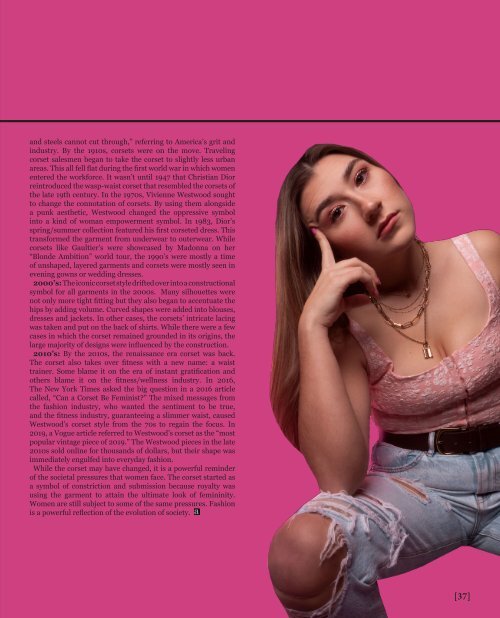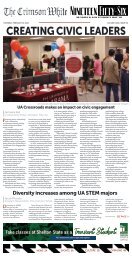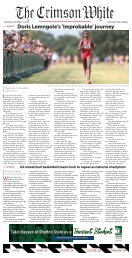Alice Vol. 7 No. 3
Charmed continues to inform college women on the issues that matter while also embracing our big sister role in the form of a college survival guide. In this issue, we have everything from a myth-busting UTI article to calling out performative activism efforts. We feature women who are artists, fashion designers and entrepreneurs. There are fool-proof date night looks to ease any new-love butterflies and a deep dive into how a TikTok subculture has revitalized a population’s love for reading. This issue is a celebration of love, and you can call us, charmed.
Charmed continues to inform college women on the issues that matter while also embracing our big sister role in the form of a college survival guide. In this issue, we have everything from a myth-busting UTI article to calling out performative activism efforts. We feature women who are artists, fashion designers and entrepreneurs. There are fool-proof date night looks to ease any new-love butterflies and a deep dive into how a TikTok subculture has revitalized a population’s love for reading. This issue is a celebration of love, and you can call us, charmed.
Create successful ePaper yourself
Turn your PDF publications into a flip-book with our unique Google optimized e-Paper software.
and steels cannot cut through,” referring to America’s grit and<br />
industry. By the 1910s, corsets were on the move. Traveling<br />
corset salesmen began to take the corset to slightly less urban<br />
areas. This all fell flat during the first world war in which women<br />
entered the workforce. It wasn’t until 1947 that Christian Dior<br />
reintroduced the wasp-waist corset that resembled the corsets of<br />
the late 19th century. In the 1970s, Vivienne Westwood sought<br />
to change the connotation of corsets. By using them alongside<br />
a punk aesthetic, Westwood changed the oppressive symbol<br />
into a kind of woman empowerment symbol. In 1983, Dior’s<br />
spring/summer collection featured his first corseted dress. This<br />
transformed the garment from underwear to outerwear. While<br />
corsets like Gaultier’s were showcased by Madonna on her<br />
“Blonde Ambition” world tour, the 1990’s were mostly a time<br />
of unshaped, layered garments and corsets were mostly seen in<br />
evening gowns or wedding dresses.<br />
2000’s: The iconic corset style drifted over into a constructional<br />
symbol for all garments in the 2000s. Many silhouettes were<br />
not only more tight fitting but they also began to accentuate the<br />
hips by adding volume. Curved shapes were added into blouses,<br />
dresses and jackets. In other cases, the corsets’ intricate lacing<br />
was taken and put on the back of shirts. While there were a few<br />
cases in which the corset remained grounded in its origins, the<br />
large majority of designs were influenced by the construction.<br />
2010’s: By the 2010s, the renaissance era corset was back.<br />
The corset also takes over fitness with a new name: a waist<br />
trainer. Some blame it on the era of instant gratification and<br />
others blame it on the fitness/wellness industry. In 2016,<br />
The New York Times asked the big question in a 2016 article<br />
called, “Can a Corset Be Feminist?” The mixed messages from<br />
the fashion industry, who wanted the sentiment to be true,<br />
and the fitness industry, guaranteeing a slimmer waist, caused<br />
Westwood’s corset style from the 70s to regain the focus. In<br />
2019, a Vogue article referred to Westwood’s corset as the “most<br />
popular vintage piece of 2019.” The Westwood pieces in the late<br />
2010s sold online for thousands of dollars, but their shape was<br />
immediately engulfed into everyday fashion.<br />
While the corset may have changed, it is a powerful reminder<br />
of the societal pressures that women face. The corset started as<br />
a symbol of constriction and submission because royalty was<br />
using the garment to attain the ultimate look of femininity.<br />
Women are still subject to some of the same pressures. Fashion<br />
is a powerful reflection of the evolution of society.<br />
[37]


















